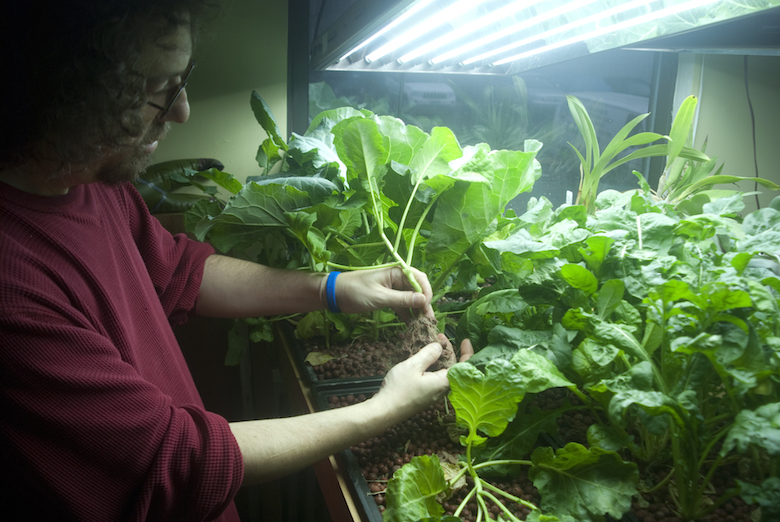
Apartment 1D at 1609 Dekalb Avenue stands at the intersection of science fiction and locavore utopia. It might be 20 degrees outside, but here in Lee Mandell’s 1,000-square-foot Bushwick loft hang row after row of tender lettuce, cucumbers, bok choy and basil, all rooted not in soil but in plastic trays hooked up to pumps of dissolved nutrients like some leafy sequel to The Matrix. True, it’s nowhere as lovely as a row of tomatoes reaching toward the summer’s rays, but urbanites have to eat, even in February—and thanks to hydroponic farmers like Lee, they can.
Mandell calls his business—and his home—Boswyck Farms, and it’s actually his second career in tech. The 49-year-old with a curly mop of hair and slightly hippie sensibility was a computer programmer until just three years ago. That’s when an urban farm project at Columbia University got him pumped about hydroponic projects feeding neighborhoods in need. He left the keyboard for kohlrabi.
“Cities grow up,” says Mandell, “and so should our gardens.”
He and his staff of four now help fund, build and maintain hydroponic farms for organizations like the Child Development Support Corporation in Clinton Hill. That project—three double-stacked six-foot wooden shelves in the back of the nonprofit’s office—was funded in part with a U.N. seed grant and now supplies fresh vegetables to their weekly food pantry, even when local markets are a rainbow of roots. And at a nearby Bushwick public high school called the Academy of Urban Planning, Mandell has helped install a modern garden of Babylon: vertical planters that climb 16 feet tall. It’s part of an urban farmette and after-school project for 10th graders managed with help from a local nonprofit called EcoStation.
Most of the year you can also see Mandell’s techniques on the roof of 207 Starr Street, the super-artsy performance space called Bushwick Starr—where a demo project welcomes avant-garde theater patrons with sorrel when they go out for smoke breaks.
Better still is one of the two-hour workshops Mandell runs out of his apartment, which feels like the inside of an aquarium, thanks to the fluorescent grow lights and burbling water pumps. You’ll learn how to make your own kit with a small bucket, clay pellets and plastic tubing—no summer sun required.



